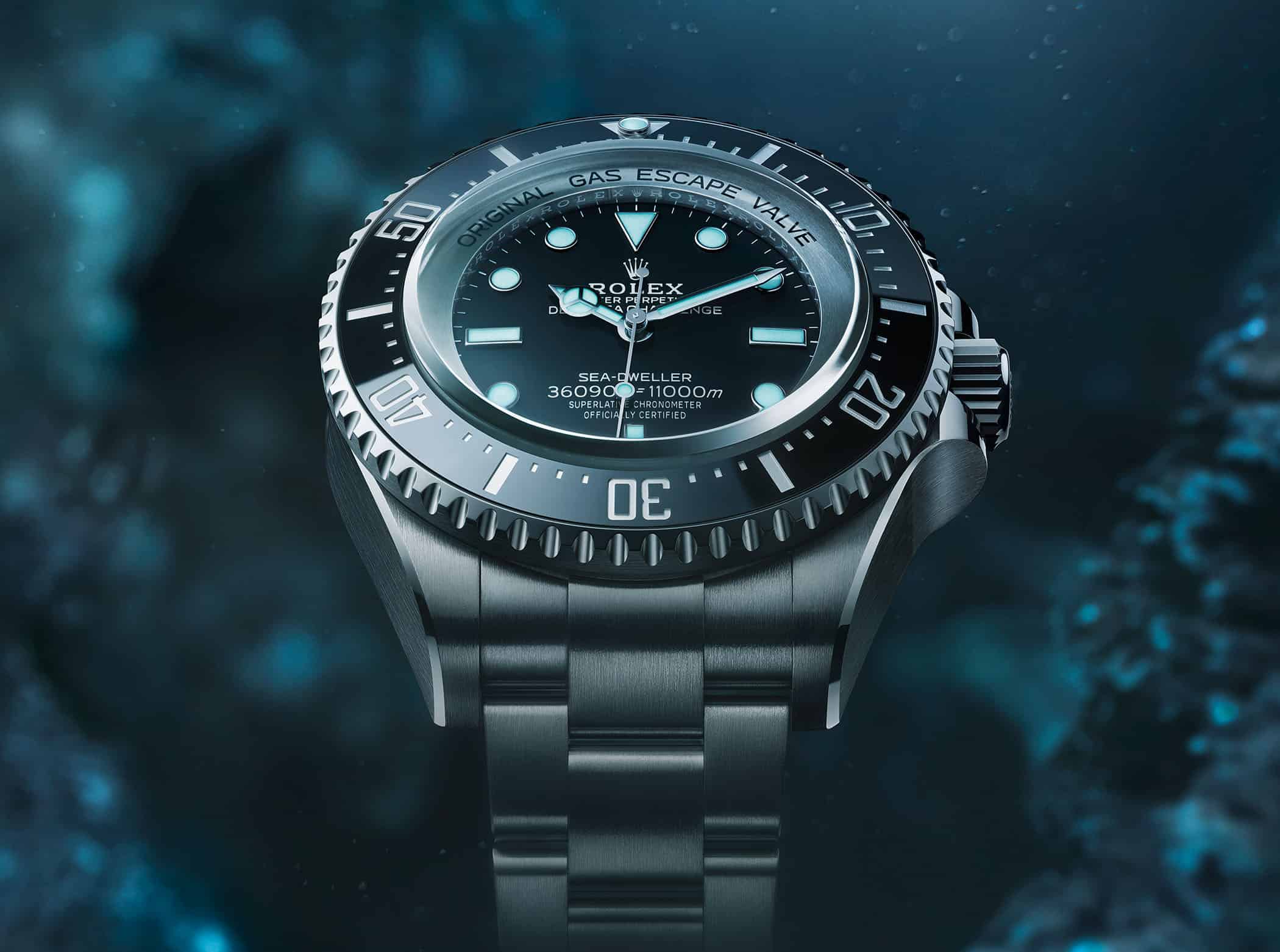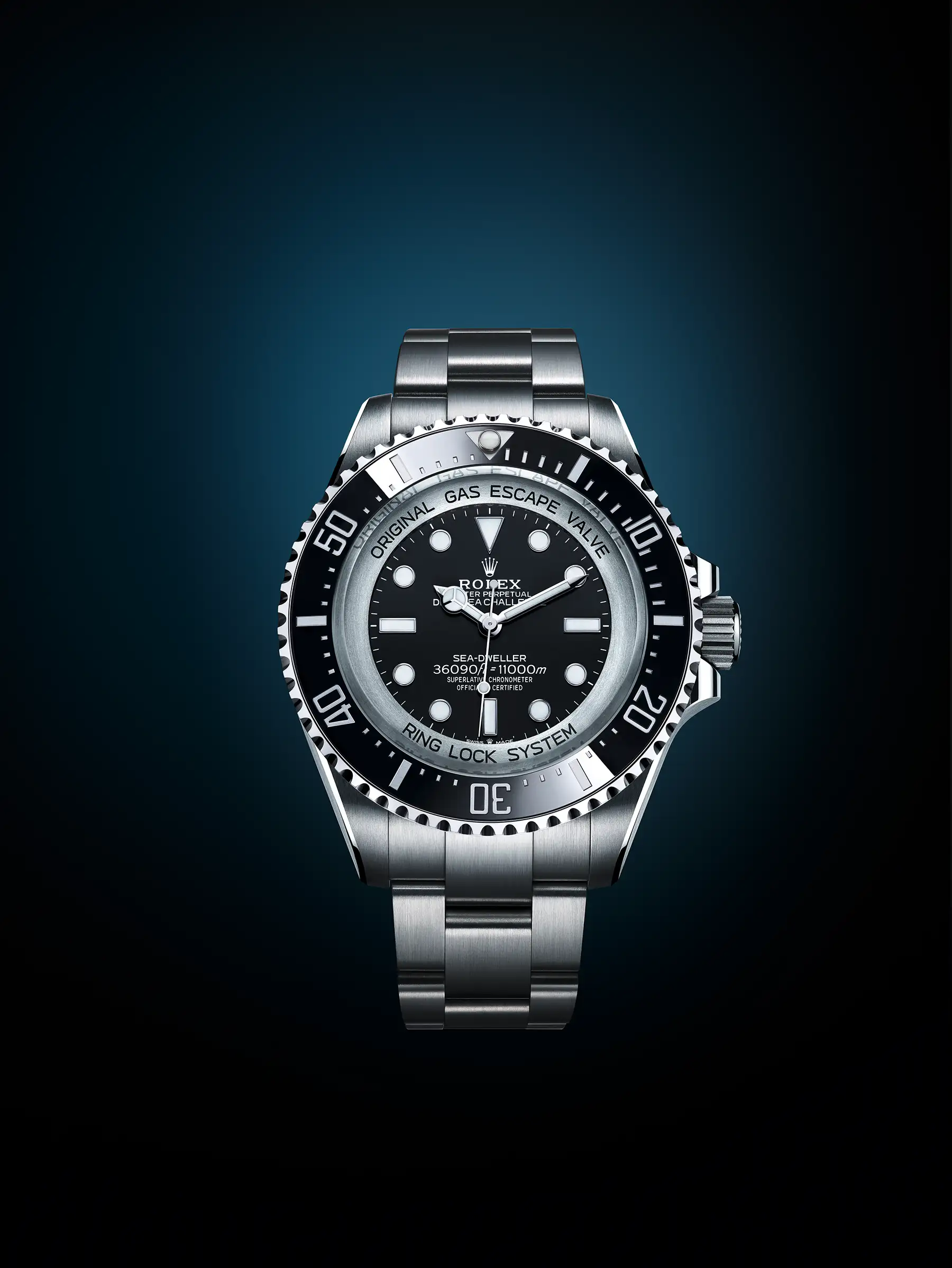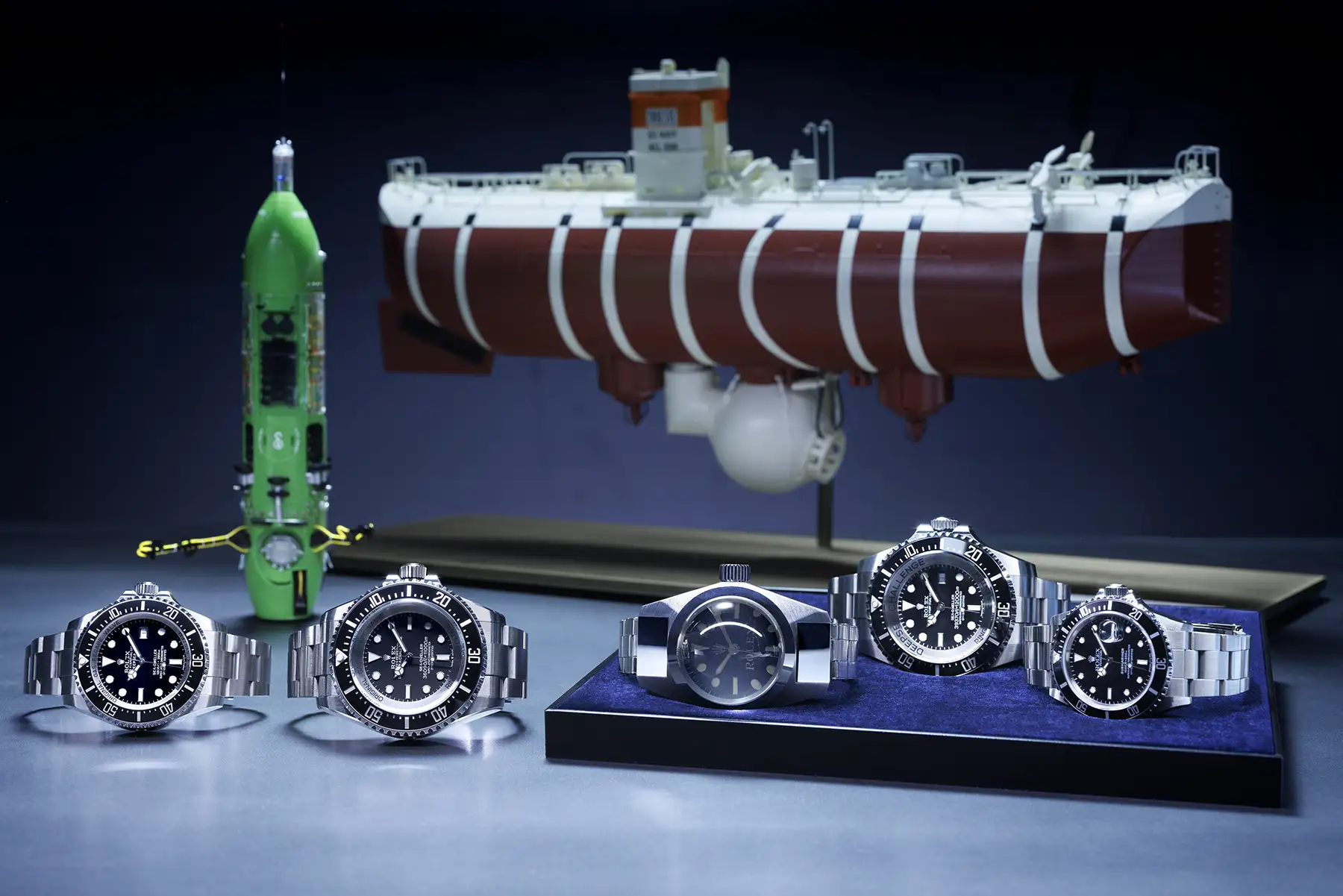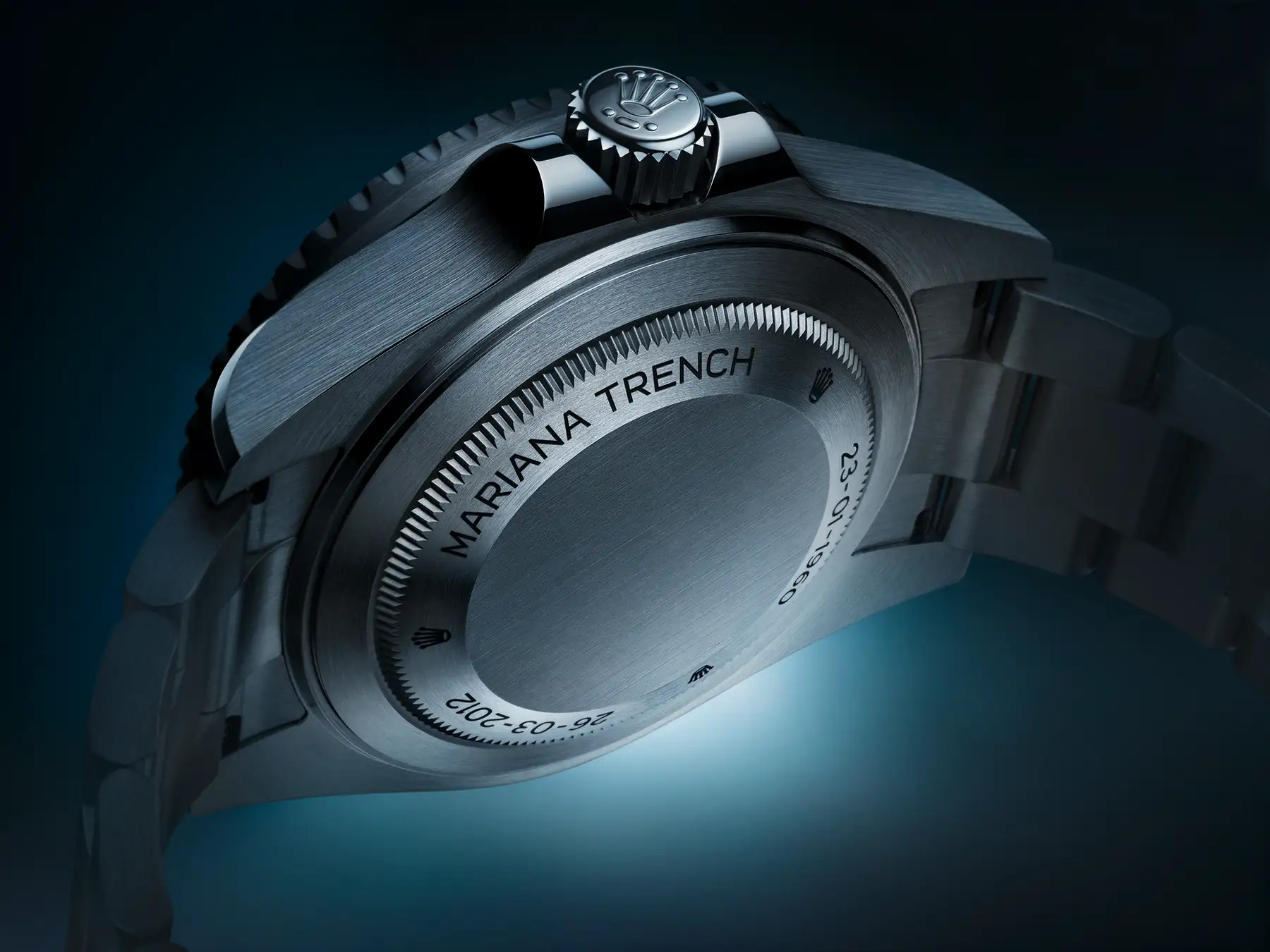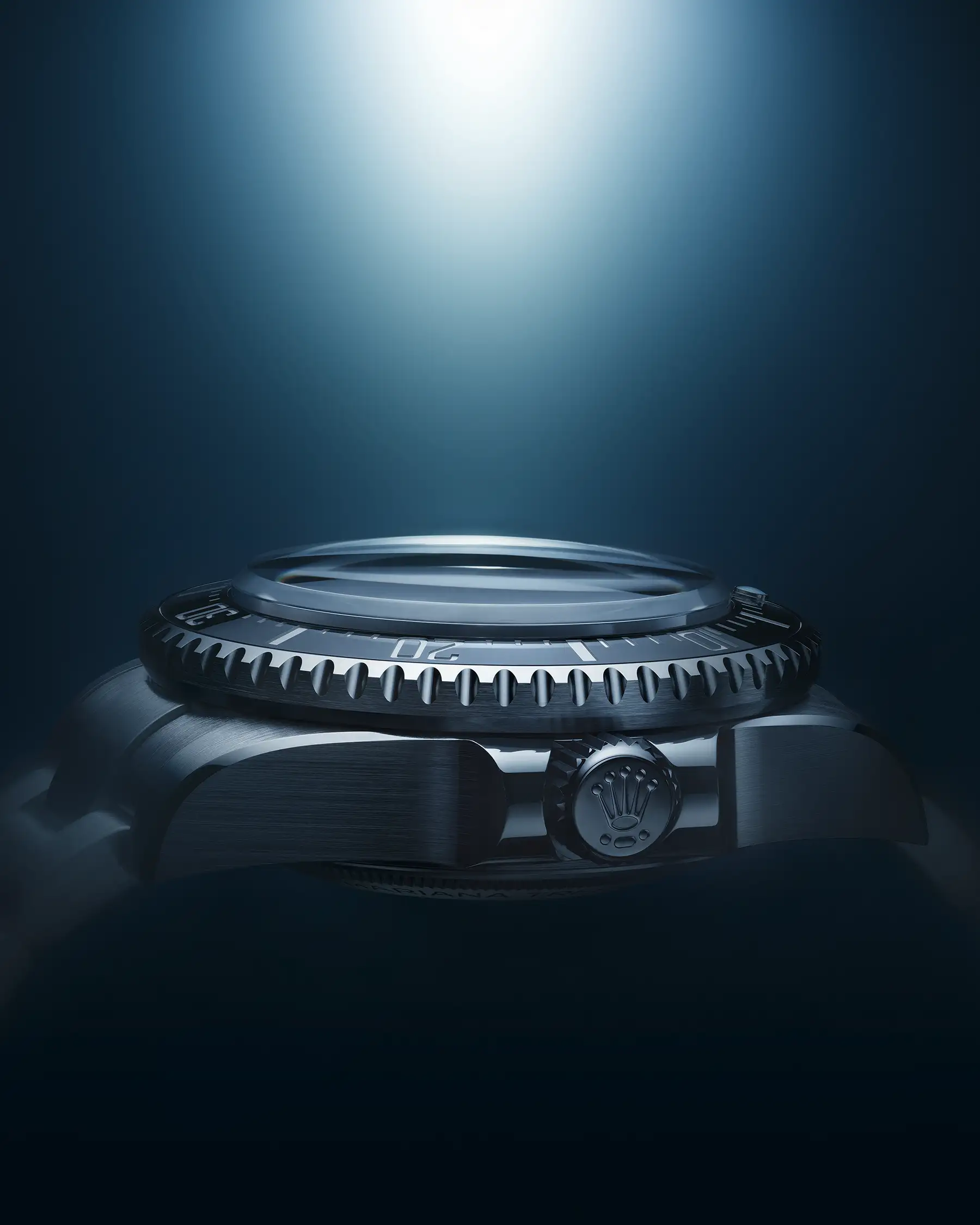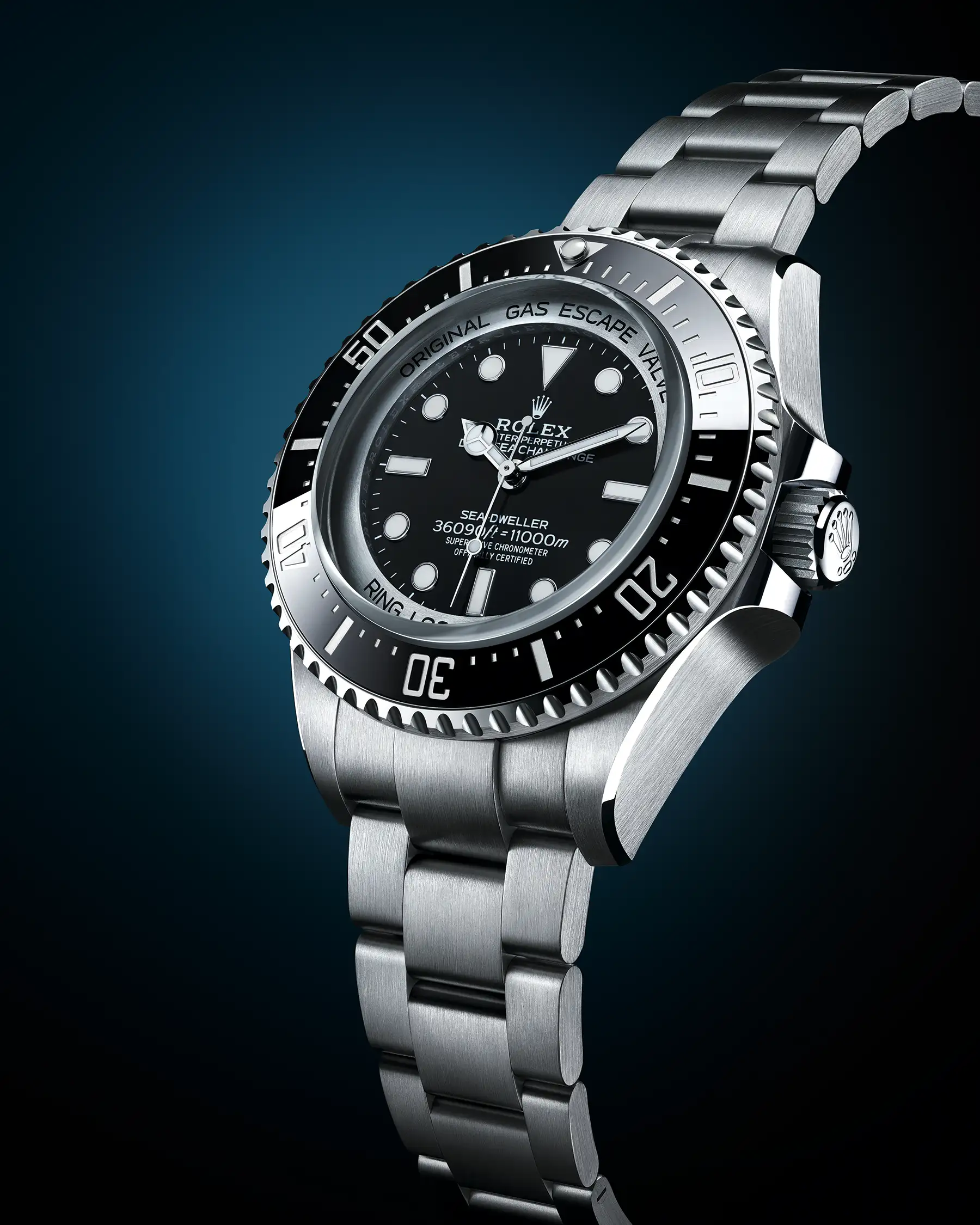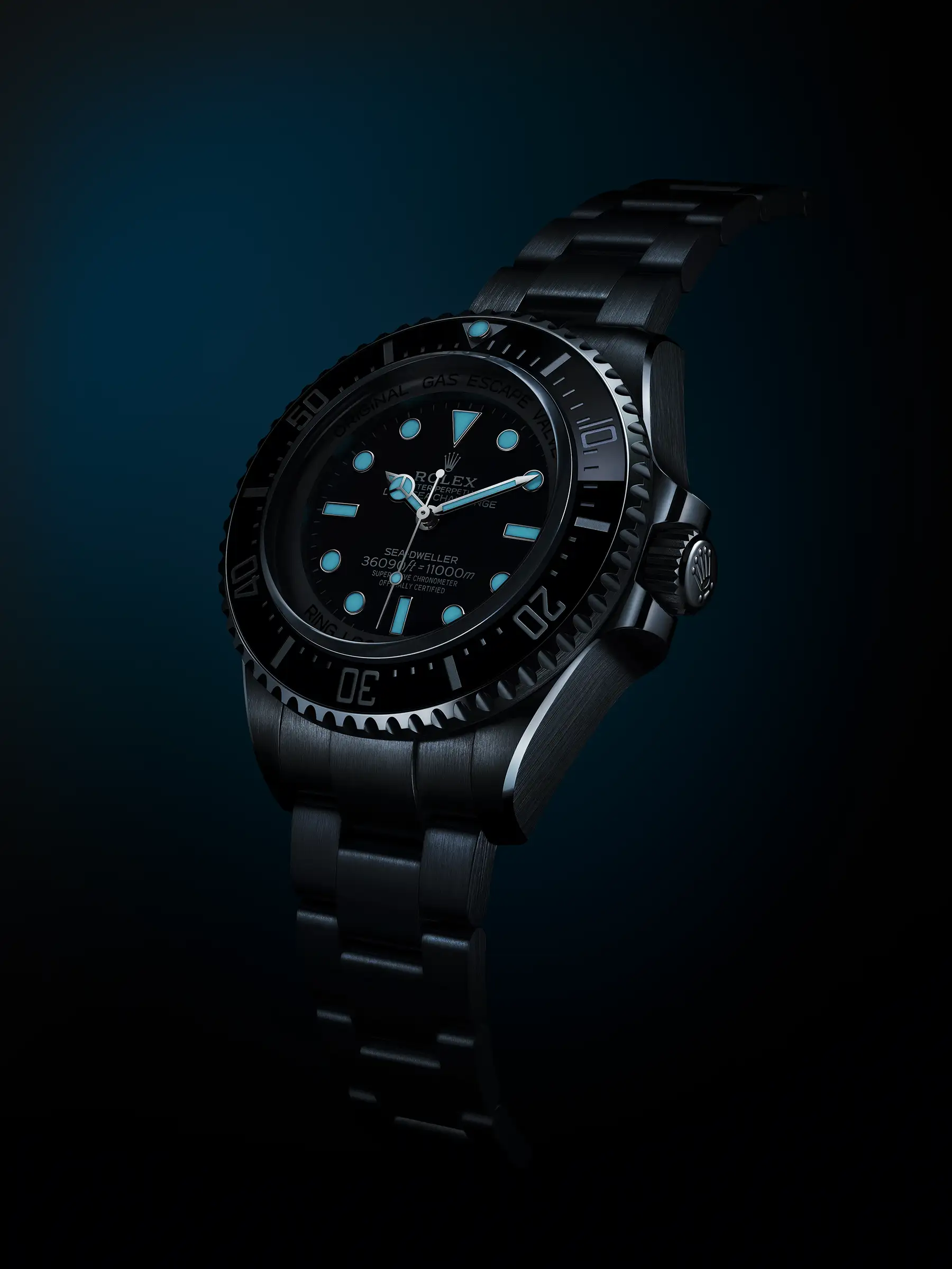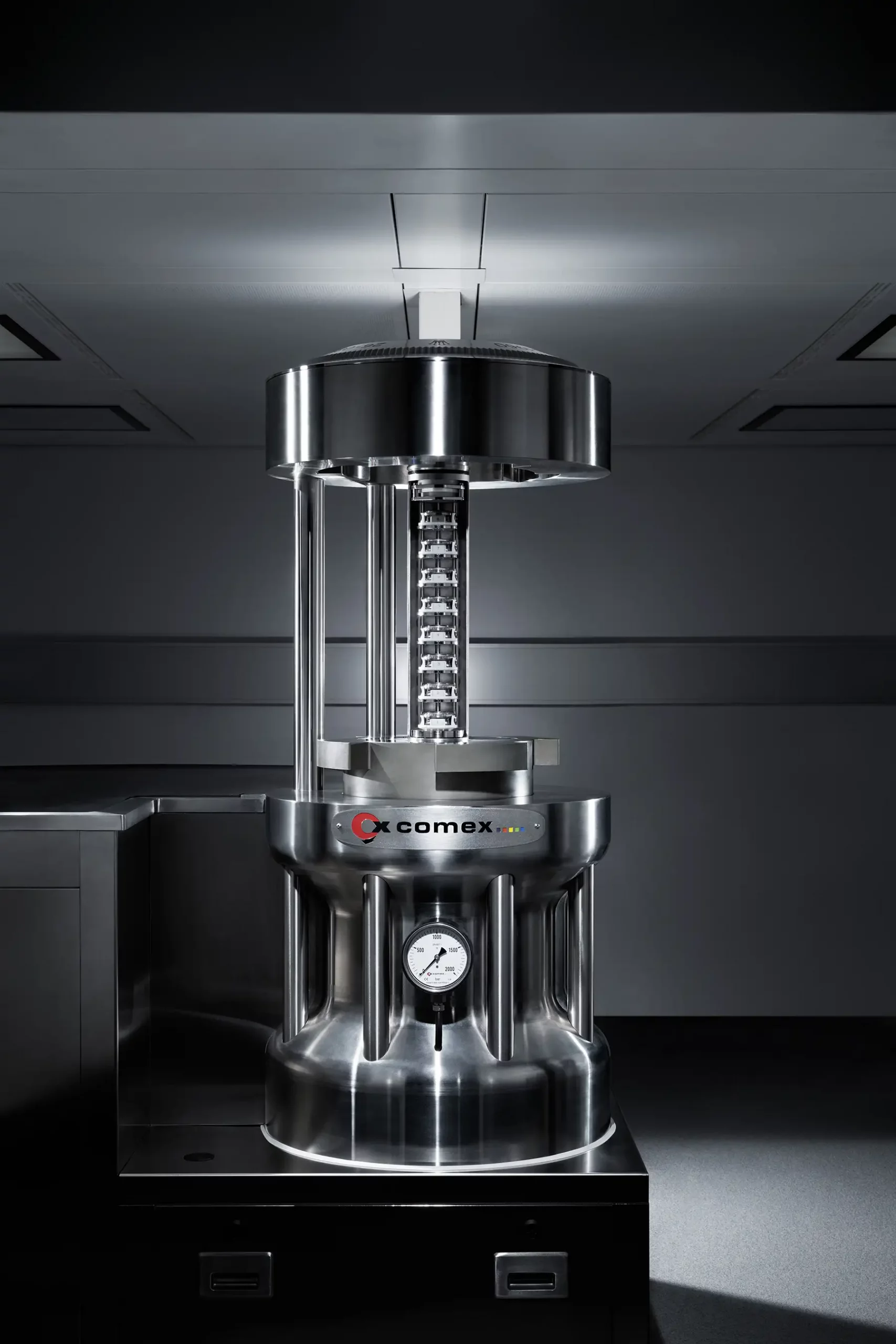In a surprising move this morning Rolex, along with filmmaker/adventurer extraordinaire James Cameron, revealed a new Deepsea Challenge in the reference 126067. Rolex enthusiasts will immediately notice something new about that number, and that’s the 7 at the very end. That last digit denotes the case material, and until now a 7 has never been used. That’s because this watch represents the first commercially available Rolex crafted from titanium. That may be a first, but this really is a reference that celebrates the past in a way rarely seen from the brand. That said, the most exciting details of this watch are what it might say about future releases.
The first Deepsea Challenge was used 10 years ago when it accompanied Mr. Cameron to the Mariana Trench some 36,000 feet under the surface of the Pacific ocean, and this latest reference pays tribute to both that journey, and the same one made in 1960 by oceanographer Jacques Piccard and U.S. Navy Lieutenant Don Walsh. Both the 1960 trek, made within a vessel called the Trieste, and the 2012 expedition within the vertical Deepsea Challenger, took Rolex watches along for the ride, and not just on the wrists of the occupants. Each had prototype watches strapped to the exterior of the vessels used for the descent. They would go on to survive the plunge. An impressive flex to be sure, but one with little implication to the watches we wear day and day out.









 Featured Videos
Featured Videos




